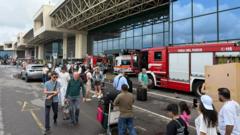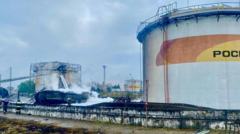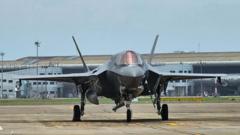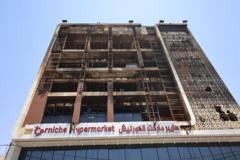An extensive report released by UK regulators highlighted that the shutdown of Heathrow Airport was triggered by a neglected electrical fault that had remained unresolved for almost eight years, raising concerns about infrastructure reliability.
Heathrow Airport Closure Linked to Neglected Electrical Fault

Heathrow Airport Closure Linked to Neglected Electrical Fault
An investigation reveals that a prolonged lack of maintenance on a transformer led to a significant fire at Heathrow Airport, resulting in over 1,000 flight disruptions.
The electrical substation fire at Heathrow, which occurred on March 21, 2025, forced a halt to operations for more than 12 hours, significantly disrupting air travel. According to the report, the fire was ignited by a short circuit within a transformer part known as a bushing, which had been identified as problematic as early as 2018 but never repaired. This oversight by National Grid Electricity Transmission, responsible for maintaining the substation, left the airport vulnerable.
During the shutdown, critical safety systems lost power, leading authorities to pause all flight activities. Initial investigations had dismissed terrorism as a cause and focused on the fire’s impact rather than its origins. The detailed 77-page report disclosed alarming findings; it noted that crucial maintenance on the affected transformer, labeled SGT3, was deferred multiple times, with the last service performed in July 2018.
As a result of the power loss, travelers and political figures, including Prime Minister Keir Starmer, expressed serious concern over the British electrical grid's reliability, emphasizing the urgent need for answers regarding the incident. Furthermore, the report revealed that Heathrow's internal power mechanisms were inadequately prepared for such outages, lacking a system to swiftly draw from nearby unaffected substations. Consequently, the airport had not anticipated a total power loss scenario, suggesting a significant oversight in its operational resilience planning.
In conclusion, the incident not only disrupted international travel but also raised substantial questions about the adequacy and maintenance of critical infrastructure serving one of the world’s busiest airports.
During the shutdown, critical safety systems lost power, leading authorities to pause all flight activities. Initial investigations had dismissed terrorism as a cause and focused on the fire’s impact rather than its origins. The detailed 77-page report disclosed alarming findings; it noted that crucial maintenance on the affected transformer, labeled SGT3, was deferred multiple times, with the last service performed in July 2018.
As a result of the power loss, travelers and political figures, including Prime Minister Keir Starmer, expressed serious concern over the British electrical grid's reliability, emphasizing the urgent need for answers regarding the incident. Furthermore, the report revealed that Heathrow's internal power mechanisms were inadequately prepared for such outages, lacking a system to swiftly draw from nearby unaffected substations. Consequently, the airport had not anticipated a total power loss scenario, suggesting a significant oversight in its operational resilience planning.
In conclusion, the incident not only disrupted international travel but also raised substantial questions about the adequacy and maintenance of critical infrastructure serving one of the world’s busiest airports.




















